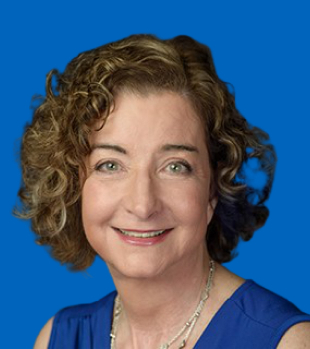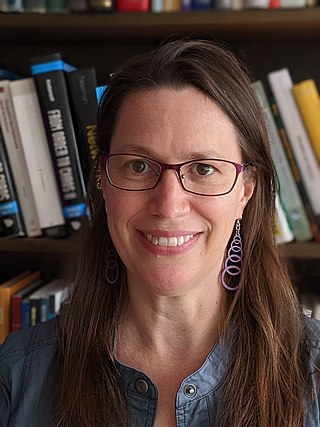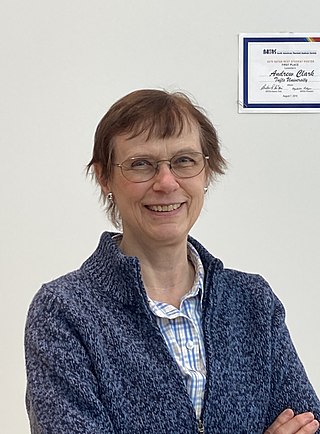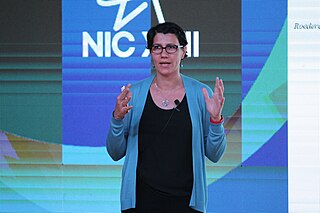Related Research Articles
Jacob Klein, is the Herman Mark Professor of Soft Matter Physics at the Weizmann Institute in Rehovot, Israel. He is well known for his work in soft condensed matter, polymer science and surface science.
William H. Bassichis is an American physicist. He has been a physics professor at Texas A&M University since 1970. He is the author of a series of undergraduate physics textbooks titled Don't Panic, which is used by some universities across North America. Before teaching at Texas A&M, Bassichis has done research at the Weizmann Institute of Science, the Centre d'études Nucléaires de Saclay, and the Lawrence Livermore Laboratory. He has also taught at MIT.
Eugen Merzbacher was an American physicist.
Louise Ann Dolan is an American mathematical physicist and professor of physics at the University of North Carolina at Chapel Hill. She does research in theoretical particle physics, gauge theories, gravity, and string theory, and is generally considered to be one of the foremost experts worldwide in this field. Her work is at the forefront of particle physics today.
Francis Dudley Williams was an American physicist. He served as president of the Optical Society of America from 1976 to 1980.

Laura H. Greene is the Marie Krafft Professor of Physics at Florida State University and chief scientist at the National High Magnetic Field Laboratory. She was previously a professor of physics at the University of Illinois at Urbana-Champaign. In September 2021, she was appointed to the President's Council of Advisors on Science and Technology (PCAST).
Sandra Charlene Greer is an American physical chemist who has held important academic and administrative positions at both the University of Maryland, College Park and Mills College. Her area of study is the thermodynamics of fluids, especially polymer solutions and phase transitions. She has received awards for her scientific contributions, and for her advocacy for women in science and her work on ethics in science.
Luz Martinez-Miranda is an American-Puerto Rican physicist. She is currently an associate professor in the College of Materials Science and Engineering at the University of Maryland. Martinez-Miranda is an APS Fellow and was the first female president of the National Society of Hispanic Physicists.
Sherry J. Yennello is an American nuclear chemist and an Elected Fellow of the American Association for the Advancement of Science. She is a Regents Professor and the holder of the Cyclotron Institute Bright Chair in Nuclear Science, who currently serves as the Director of the Cyclotron Institute at Texas A&M University. She is also a Fellow of the American Chemical Society and the American Physical Society. She has authored as well as co-authored more than 530 peer reviewed journal articles and has conducted many invited talks, presentations and seminars at several prestigious academic conferences and scholarly lectures.

Heather Lewandowski is a professor of physics at the University of Colorado Boulder. She looks to understand the quantum mechanical processes in making chemical bonds. She uses time-varying inhomogeneous electric fields to achieve supersonic cooling. She also studies how students learn experimental skills in instructional physics labs and help to improve student learning in these environments. She is a Fellow of the American Physical Society.

Karen E. Daniels is an American physicist who is a professor of physics at North Carolina State University. Her research considers the deformation and failure of materials. She is a Fellow of the American Physical Society, and serves on their Committee on the Status of Women in Physics. She is also a Fellow of the American Association for the Advancement of Science.

Peggy Cebe is a professor of physics in the Department of Physics and Astronomy of Tufts University.

Artemisia (Artemis) Spyrou is an experimental nuclear astrophysicist and professor at Michigan State University. She is also the Associate Director for Education and Outreach at the National Superconducting Cyclotron Laboratory. She was the recipient of a NSF CAREER Award.
Ruth Wright Chabay is an American physics educator known for her work in educational technology and as the coauthor of the calculus-based physics textbook Matter and Interactions. She is professor emerita of physics at North Carolina State University.
Karen Irene Winey is an American materials scientist and chair of the University of Pennsylvania department of materials science and engineering.
Sindee Lou Simon is an American chemical engineer and polymer physicist who studies the glass transition, thermosetting polymers, and nanoconfinement. Her research has included studies of ancient amber, showing that unlike liquids glass does not flow. She is the head of the Department of Chemical and Biomolecular Engineering at North Carolina State University.
Laurie Elizabeth McNeil is an American condensed matter physicist and materials scientist whose research topics have included optical spectroscopy, the properties of crystals and semiconductors, and the synthesis of carbon nanotubes. She is Bernard Gray Distinguished Professor of Physics and Astronomy at the University of North Carolina at Chapel Hill.
Gabriel C. Spalding is an American physicist.
Mona Inesa Berciu is a Romanian-Canadian theoretical condensed matter physicist whose research involves electromagnetic effects in materials, including ferromagnetism, superconductivity, magnetic semiconductors, photonic band gaps, polarons, spintronics, and the quantum Hall effect. She is a professor of physics at the University of British Columbia.
Marie Lopez del Puerto is a condensed matter physicist whose research concerns the computational study of the electronic, optical, and quantum properties of nanocrystals and nanostructures. As a physics educator, she has worked to integrate computational physics into the undergraduate physics curriculum. Educated in Mexico and the US, she works in the US as a professor of physics and chair of the physics department at the University of St. Thomas, a private Catholic university in Minnesota.
References
- 1 2 3 "Laura Clarke", People, NC State University Department of Physics, retrieved 2023-10-25
- 1 2 3 4 "Laura Clarke", Clarke lab, NC State University, retrieved 2023-10-25
- 1 2 2023 Jonathan F. Reichert and Barbara Wolff-Reichert Award for Excellence in Advanced Laboratory Instruction Recipient: Laura Clarke, North Carolina State University, American Physical Society, retrieved 2023-10-25
- ↑ Strange, Deborah (12 April 2022), "Laura Clarke Wins UNC Board of Governors Award for Excellence in Teaching", NC State News, retrieved 2023-10-25
- ↑ "Fellows nominated in 2023 by the Division of Soft Matter", APS Fellows archive, American Physical Society, retrieved 2023-10-25